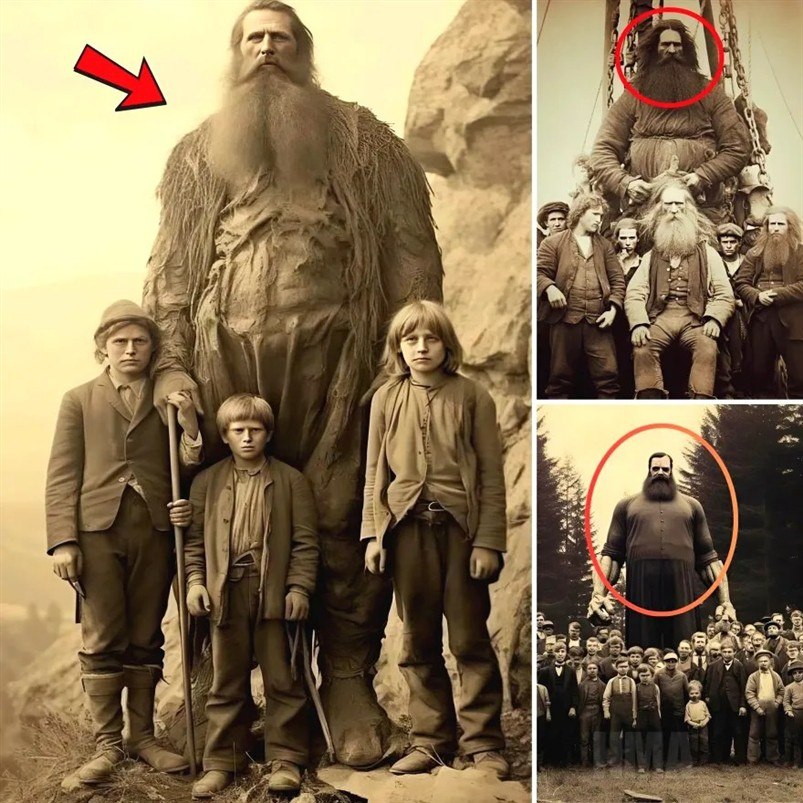Giants of the Old World: Folklore Meets Reality

In the imagination of Europe’s past, few figures loomed larger—both literally and symbolically—than the giant. This late 19th-century portrayal of mythical giants offers more than a fanciful image; it is a cultural window into the way societies have long wrestled with forces greater than themselves. Towering above children, cloaked in moss or coarse cloth, the giant becomes an uncanny blend of wonder and unease, a figure at once protective and threatening.

In European folklore and mythology, giants appear in many guises. In Norse sagas, they were the primordial Jötnar, embodiments of chaos and raw natural power. In Celtic traditions, they stood as guardians of sacred landscapes, shaping hills and valleys with their steps. Even in Christianized Europe, giants remained woven into local tales—sometimes as enemies of saints, sometimes as reminders of an older, untamed order. To see them in art is to glimpse the echo of ancestral stories, passed down to help explain both the terrifying and the sublime in nature.
The 19th century was a time of rapid industrialization, science, and skepticism, yet giants still held cultural weight. Their portrayal in art and illustration reflects both nostalgia for the past and unease about modernity. Cloaked in moss or roughspun cloth, the figure in this depiction resembles not only a mythic being but also the land itself, suggesting that giants were more than characters—they were embodiments of the forests, mountains, and elements that dwarfed human life. Standing beside children, the contrast underscores the timeless theme of scale: how small humanity feels when confronting forces beyond its control.

Giants also played a dual role in the European imagination. They were guardians—keepers of boundaries, thresholds, and sacred places. But they were also threats, embodying danger, famine, or chaos. This ambiguity allowed giants to serve as mirrors of human fears and hopes, adaptable to each cultural moment. In rural communities, stories of giants explained unusual rock formations or ancient ruins, linking landscape and legend in one seamless narrative.
This haunting image captures that paradox perfectly. It is not a record of fact but a testament to imagination, showing how folklore helps us navigate the unknown. By giving shape to forces larger than ourselves—whether natural or spiritual—stories of giants offered both comfort and caution. They reminded listeners of the vastness of the world, the fragility of human existence, and the enduring power of the environment.

Today, the mythical giants of the Old World endure in literature, fantasy, and art. They continue to inspire awe, standing as metaphors for the challenges that rise before us—whether towering landscapes, overwhelming change, or personal trials. This 19th-century portrayal reminds us that folklore is never just about superstition. It is about the human need to confront the immense, to translate fear into story, and to imagine guardians and adversaries where reality falls silent.
#MythicalGiants #FolkloreMystery #EuropeanLegends #CulturalHeritage











